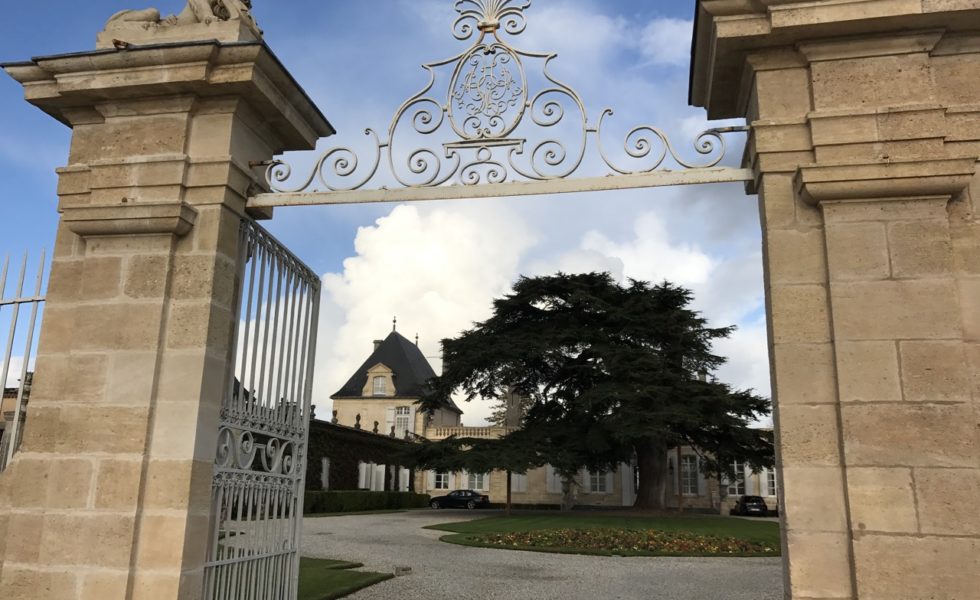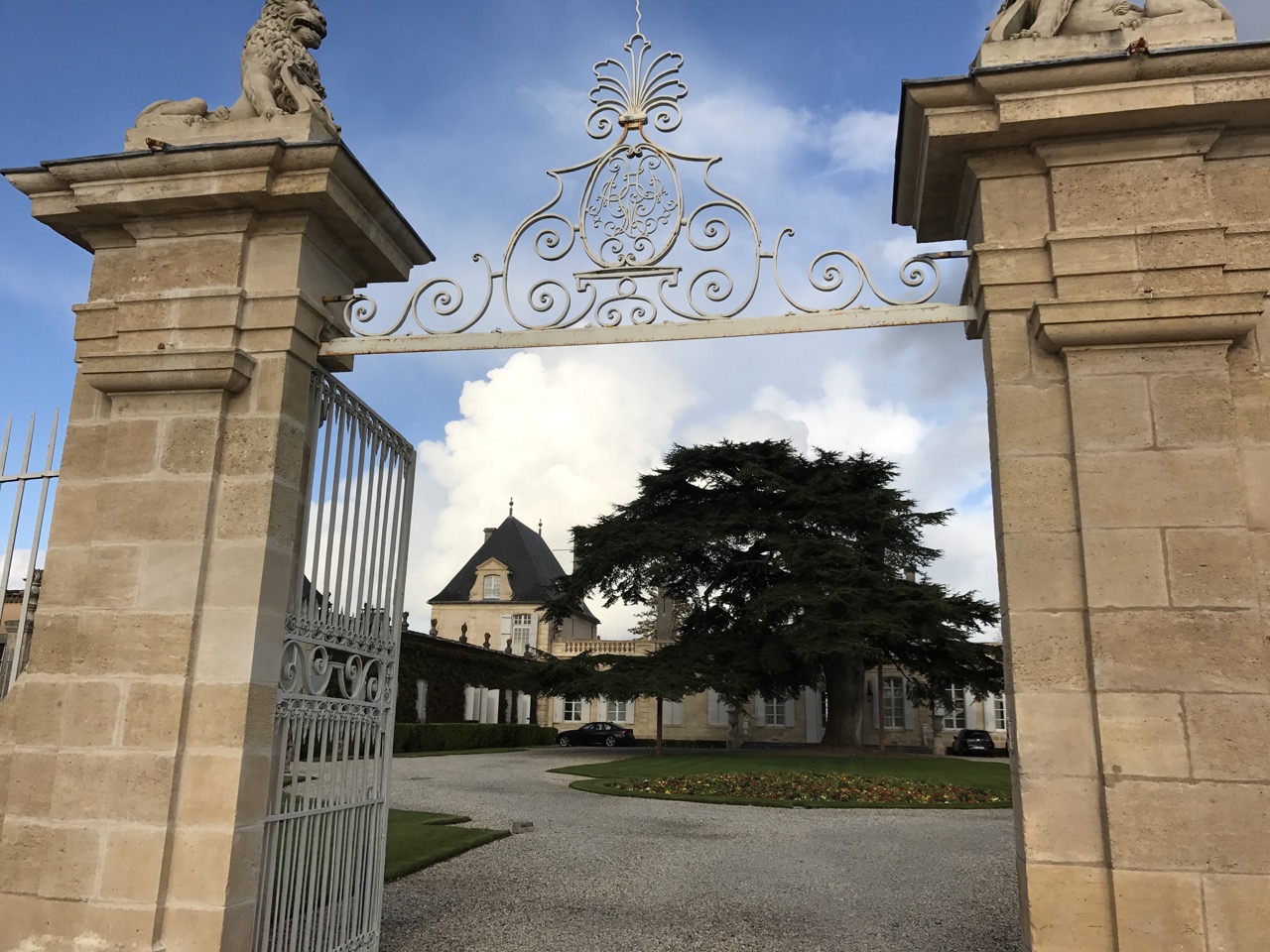Saint Julien the Consistent …

… and consistently delicious in 2018
By Panos Kakaviatos for wine-chronicles.com
26 April 2019
This famous Médoc appellation often tends to be the most consistent in any given vintage, and all the more in 2018. The more extreme alcohol levels and lower acidities of Saint Estèphe are not found here. A series of wines combines elegance, tannic edge, and suave palates. Sure, the tannins in some are almost too intense, and they are going to be long-term cellar wines especially. But certain estates “rose above the vintage” to make truly superb wines of “Bordeaux balance”.
Overall favorites include Léoville Las Cases, Beychevelle and Gruaud Larose.
But most all communicate pure fruit and even floral aromas. This appellation is indeed a 2018 “sweet spot”, more so than in most vintages.
As usual, if in bold, I liked in particular. If red and bold, even more. If underlined, too, potential wine nirvana (these are, after all, barrel samples).

Château Beychevelle – Floral, violet and ripe fruit. The palate shows finesse-filled density and tannic edge, but always overlaid by such a suave and smooth veneer, that is not “modern sheen” but just refined. A lovely wine with lift and freshness on the long finish. The best Beychevelle that I can recall ever trying from barrel. Bravo! 94-96
Château Branaire Ducru – Potential bargain alert for a cru classé, as Liv-Ex already has determined. Much like neighbor Beychevelle, this estate is all floral and fruit-driven aromatically. The palate is clean, crisp and tasty, with elegance and subtle opulence ending with a long finish. I like the prototypical Saint Julien elegance. 93-95
Château Ducru-Beaucaillou – This blend of 85% Cabernet Sauvignon and 15% Merlot clocks in at 14.5% alcohol and includes a whopping 95 index of tannin. The pH is a healthy 3.7, so one has an impression of freshness, even if the tannins come across more imposing than refined. Indeed, as the estate’s own literature goes for this vintage: “powerful and elegant structure”. I would say that the elegance comes more on the finish, so give this time. There are layers of ripe, dark fruit, with some graphite aspects and violet floral on the finish. In the end, the strong tannins really need time to settle, and I caught myself writing “more Old School tough as nails” here… Long finish, of course. 94-96
Clos du Marquis – Tasted at Léoville Las Cases and there is no second wine, because 8% of the Petite Marquise would have been used up just for barrel tastings, quipped director Pierre Graffeuille. Very rich in fruit, depth, as well, and you have a certain alcoholic power, too but not “New World” as some come close to being in 2018. Less clay here, “so we suffered a bit more”, from the dry heat, Graffeuille stressed. And hence the yields are a bit lower than usual. At a 30 year average, the vines do not yield grapes with as much depth as with the grand Léoville Las Cases (50 years old average). Also, there is more clay at Léoville Las Cases, so less vine suffering. Some lead pencil here, too. Graphite. A fine wine indeed! 92-94
Château Gloria – Bargain alert! Even if this estate has been going up in price over the years, it still gives the official classified growths a run for their money, and such is absolutely the case in 2018, with fine, floral aspects and ripe fruit. Clean to be sure, and with a less evidently oaky influence, as we saw in some other appellations. Nice job! 92-94
Château Gruaud Larose – Black olive and tapenade on the nose. Ripe fruit, sure, but also floral aspects, dew and plum, too. The palate shows more depth and density than many others in the appellation. Combined with rather velvety tannins, and you have the potential for a modern era 1990 (sans brett) in the making. 95-97
Château Lagrange – I like the floral and rose like aromas. Very red fruit and supple. The attack is frank and pleasing, although it lacks the density of the top wines from Saint Julien. A medium term buy as your other 2018s from Saint Julien mature in the cellar. 91-93
Lalande-Borie – Like its bigger brother, Château Ducru Beaucaillou, this wine is more about power. The IPT is at 90 and alcohol at 14.5%. It was not one of my favorite second wines from top Médoc estates, because it rather made my gums pucker. This blend of 60% Merlot and 40% Cabernet Sauvignon needs to be stashed away in your cellar for 10 years. Let us see how it feels from bottle in any case. 90-92
Château Langoa Barton – This shows a certain refinement of tannin, and depth, too, on the palate, as well as floral elegance. A bit closed in, as it can be en primeur. Even if the aromatics are not as refined as are those of Beychevelle or Branaire, the wine just needs time for the tannin to soften – and it should be quite nice in 10 years time. 92-94
Château Léoville Barton – One needs aeration to coax the graphite and floral aromas, as the nose is subtle. The palate density is most impressive, marked by rather imposing, but never hard tannins. There is a lot “going on”, and I feel that this is more in the vein of, say, 2005 than of 2009. Give it (loads) of time in your cellar. 94-97

Château Léoville Las Cases – The vintage suits this estate, which can seem steelier from barrel in cooler vintages. In a sense it reminded me of the superlative 2009, but perhaps better. At 80% Cabernet Sauvignon, 11% Cabernet Franc and 9% Merlot, the alcohol is just under 14.5% with high tannins and aging in 90% new oak. While some estates in 2018 may be cutting back on the new oak or the aging time (Cos d’Estournel), director Pierre Graffeuille may extend the time in barrel to “20 months or maybe more”. Fine Cuban Cigar. Very long on the finish and veritable velvety lift. Maybe this surpasses Lafite in some ways! There is such density and yet fine finesse and lift. You get a sense of pure red, crystalline fruit, then tobacco, fine Cuban, and density as well as lift, as the alcohol is buffered by excellent acidity. Indeed, the finish is marked by gorgeous orange peel freshness. “This could shut down, as the tannins are there”, owner Jean Hubert Delon stressed. When talking about 2016, Delon says this “could be like comparing 1959”. . He recalls the aromas of the vat room for the 1959, as a kid smelling that in the cellar, and the 2018 reminds him of that. 97-100
Château Léoville Poyferré – This blend of 64% Cabernet Sauvignon, 30% Merlot and three per cent each of Cabernet Franc and Petit Verdot clocks in at 14.4% alcohol with a tannic index of 90, and a pH of 3.7. The nose is scrumptious, with opulent ripe fruit and floral aspects that invite more drinking. The tannins exude finesse and the finish is long. A great among the Saint Juliens, although I still prefer the balance of the 2016, which was superb indeed from barrel, and nearly one degree less alcohol and more acidity. Still, this could well be a modern day 1990 in the making, and some readers may know who utterly delicious the 1990 is from this estate. 95-97
Château Moulin Riche – Bargain alert! This wine was cropped at 43 hectoliters per hectare. It blends 59% Cabernet Sauvignon, 23% Merlot, 17% Petit Verdot and 1% Cabernet Franc. You recall my initial text on 2018 for the extra use of Petit Verdot? Well here another example. I like a certain cedar like freshness to this wine, along with ripe fruit, and spice! A wine to seek in this vintage, with tannin and volume (80 IPT tannin, and 14.1% alcohol with a pH of 3.7). Editing error: I had initially called this a “second wine” to Léoville Poyferré and of course should have known better! Since 2009, Château Moulin Riche has no longer been considered “second wine” to the grand vin Château Léoville Poyferré, which makes sense, as it had been classified Cru Bourgeois Exceptionnel in 1932. 92-94
Château Saint Pierre – A more than solid Saint Pierre, with clean aromatics and fine ripe fruit. The palate is supple and ripe and … juicy. In some vintages, I noticed the oak a bit too much at this estate, but not so in 2018. Very nice! 92-94+
Château Talbot – This has a fine flavor profile, albeit a bit attenuated by some noticeable oak-derived tannin that rubs out potentially more pure fruit aspects. Am I nitpicking? Perhaps. 91-93
Category: Blog Tagged: Beychevelle, Branaire, Ducru Beaucaillou, Gloria, Gruaud Larose, Langoa Barton, Léoville Barton, Léoville Las Cases, Poyferré, Saint Julien, Talbot
 Wine Chronicles
Wine Chronicles
Share This